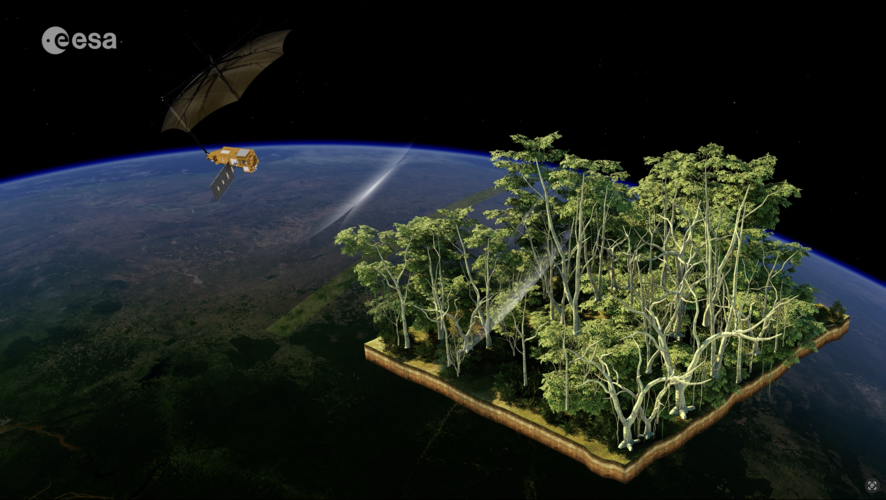ESA’s state-of-the-art Biomass mission has been designed to shed new light on the health and dynamics of the world’s forests, revealing how they are changing over time and, critically, enhancing our understanding of their role in the global carbon cycle. It is the first satellite to carry a fully polarimetric P-band synthetic aperture radar for interferometric imaging. Thanks to the long wavelength of P-band, around 70 cm, the radar signal can slice through the forest canopy and whole forest layer to measure the ‘biomass’, meaning the woody trunks, branches and stems, which is where trees store most of their carbon.
 Video:
00:02:22
Video:
00:02:22
ESA’s state-of-the-art Biomass mission has been designed to shed new light on the health and dynamics of the world’s forests, revealing how they are changing over time and, critically, enhancing our understanding of their role in the global carbon cycle. It is the first satellite to carry a fully polarimetric P-band synthetic aperture radar for interferometric imaging. Thanks to the long wavelength of P-band, around 70 cm, the radar signal can slice through the forest canopy and whole forest layer to measure the ‘biomass’, meaning the woody trunks, branches and stems, which is where trees store most of their


